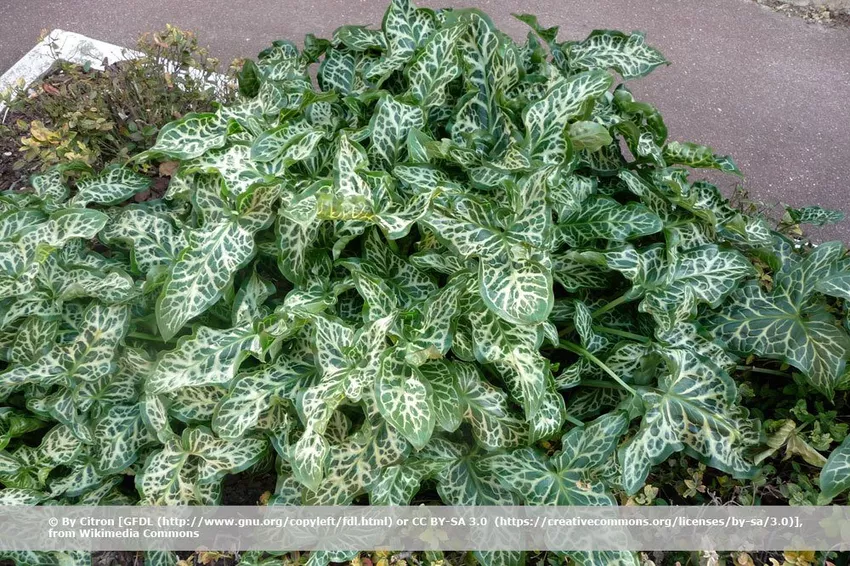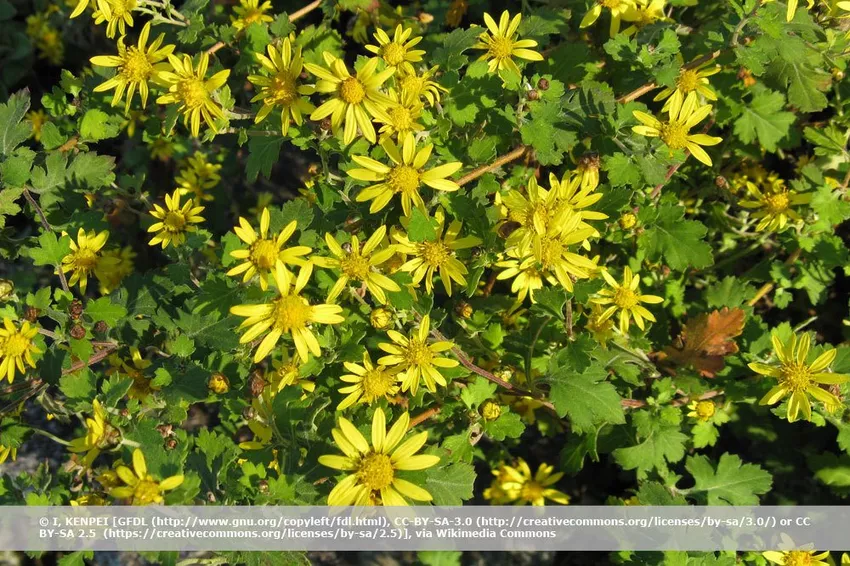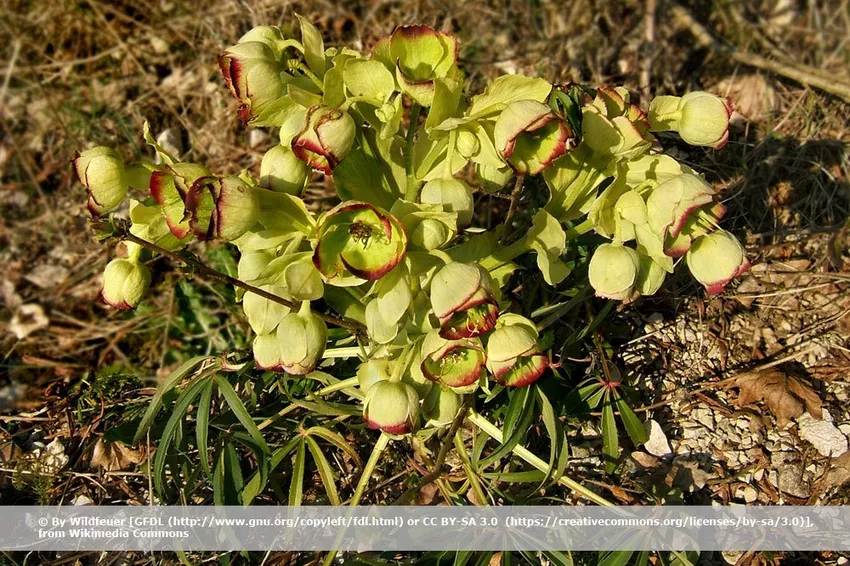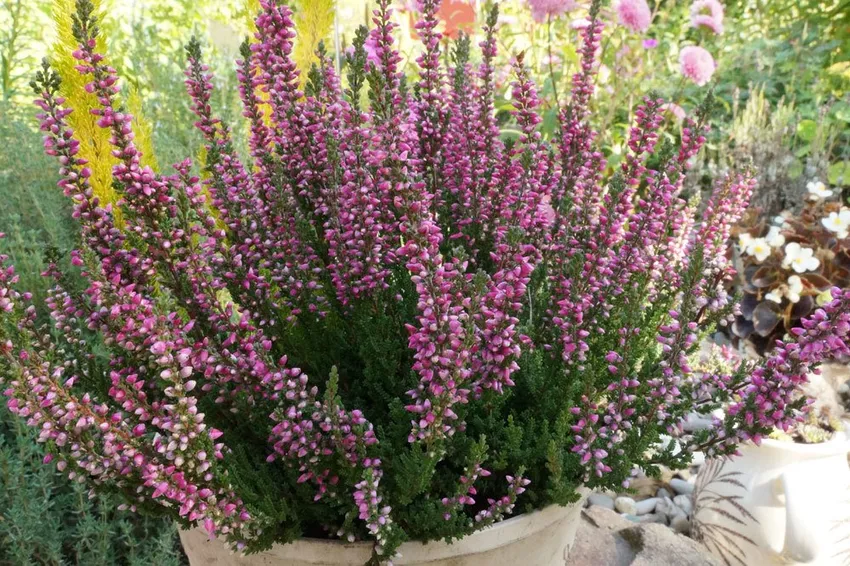
As winter approaches, the flowers retreat, leaves fall from the trees and snow covers the entire garden. Regardless of whether you have flowering balcony plants or bedding plants, these do not show up during the cold season and in most cases even die off completely. Hardy flowers, on the other hand, have no problem presenting their blossoms in the garden or on the balcony in the local latitudes.
Hardy flowers
30 hardy flowers from A to Z
Do you enjoy the flowers on your balcony every year and the pleasant scents that your bedding plants give off? The closer winter approaches, the more flowering plants such as roses, heliotropes or sweet peas withdraw. Hardy flowers are rare, but there are native and cultivated winter plants that you can easily keep in a bucket in the garden or on the balcony. These delight not only with their flowers, but also with their fragrance, which is a desired change during the cold season. The list below gives you an overview of 30 hardy flowers that brighten up the winter.
Plants from A to C
1. Early spring cyclamen (bot. Cyclamen coum)
The early spring cyclamen is probably one of the best-known bedding plants. As a hardy flower, it presents its flowers in the snow from January to March. They come in a variety of colors, from white to crimson to pink, and make excellent flowering plants for the border, as the individual colors can be mixed together in attractive gradients.
 Early Spring Cyclamen, Cyclamen coum
Early Spring Cyclamen, Cyclamen coum
2. Amur Adonis (bot. Adonis amurensis)
The Amur Adonis is also a well-known hardy flower that belongs to the buttercup family (bot. Ranunculaceae) and immediately stands out in the snow because of the large, yellow flowers. They bloom from mid-February to April and the plant withers itself again towards the end of May.
 Amur Adonis, Adonis amurensis
Amur Adonis, Adonis amurensis
3. Chinese Wintersweet (bot. Chimonanthus praecox)
The hardy exotic is a lucky symbol in Japan and grows as a three meter high shrub in the garden. The shrubs are extremely suitable as winter plants and flowering usually begins in January, but can easily begin as early as December if the winter is mild. The lovely, yellow flowers bloom until March and can easily be cut off and placed in a vase.
 Chinese Wintersweet, Chimonanthus praecox
Chinese Wintersweet, Chimonanthus praecox
4. Christmas rose (bot. Helleborus niger)
An absolute classic is the Christmas rose, also known as the snow rose, and popular because of the extremely long flowering period. Depending on the location and temperature over the winter, the flowering period extends either from November to May or from February to April. Christmas roses feature large white flowers that make the roses the perfect bedding plant.
 Christmas rose, snow rose, Helleborus niger
Christmas rose, snow rose, Helleborus niger
Plants from D to G
5. Sweet Meatberry (bot. Sarcococca humilis)
The hardy plant is ideal for keeping in containers on the balcony and from January to March the white-pink flowers enchant the nose with an indescribable, intense fragrance.
 Fragrant Meatberry, Sarcococca humilis
Fragrant Meatberry, Sarcococca humilis
6. True winter jasmine (bot. Jasminum nudiflorum)
The real winter jasmine is another exotic representative that can make friends with the German winter. It is perfect for the balcony as it needs winter protection to avoid dying due to cool winds. It blooms in beautiful yellow flowers from December to March and really enchants everyone who sees the climbing plant. Compared to the other jasmine species, however, the plant does not smell.
 Winter jasmine, Jasminum nudiflorum
Winter jasmine, Jasminum nudiflorum
7. Fairy crocus (bot. Crocus tommasinianus)
One of the earliest crocuses, the elfin crocus shows its purple flowers as early as February and continues into March. As with all other crocus species, attention must be paid to the toxicity of this species. As winter plants, they are very suitable for the border, especially if you grow a large group at once.
 Fairy crocus, Crocus tommasinianus
Fairy crocus, Crocus tommasinianus
8. Veined Arum 'Pictum' (bot. Arum italicum ssp. italicum 'Pictum')
The veined arum 'Pictum' is one of the plants on this list that does not flower until the end of winter in mid-March, but the yellow flowers will delight any gardener. They should be kept close to woody edges to develop their full potential.
 Veined Arum, Arum italicum
Veined Arum, Arum italicum
9. Commemorative Gem (bot. Omphalodes verna)
Yes, the memorial is similar in name to the forget-me-not, but this is only due to the design of the flowers. Also known as spring navelnuts, these blue balcony plants bloom from mid-March to June and show their handsome flowers even when there is late snow.
 Commemoration, Omphalodes verna
Commemoration, Omphalodes verna
Plants from H to L
10. Autumn cyclamen (bot. Cyclamen hederifolium)
The fall cyclamen is one of the flowers that blooms from autumn into winter, making it perfect to bloom over the Christmas period. It begins to flower in October and flowering lasts until February. You can look forward to flowering plants with the cyclamen, which peep out of the snow in different shades, including white, pink, purple and blue and make the dreary winter time more cheerful.
 Autumn Cyclamen, Cyclamen hederifolium
Autumn Cyclamen, Cyclamen hederifolium
11. Autumn chrysanthemums (bot. Chrysanthemum indicum)
The autumn chrysanthemums are particularly suitable as balcony plants, but also as flowering plants for the garden. Although they are not completely hardy, they are the ideal transition to winter. They bloom in a variety of colors.
 Autumn chrysanthemum, Chrysanthemum indicum
Autumn chrysanthemum, Chrysanthemum indicum
12. Horned violet (bot. Viola cornuta)
The horned violet cannot be missing from this list of flowers for the winter. The violet family (bot. Violaceae) is one of the first heralds of spring and blooms from the end of February with good care and presents the colorful flowers until October.
 Horned violet, Viola cornuta
Horned violet, Viola cornuta
13. Camellia (bot. Camellia japonica)
With their pink flowers, camellias are one of the absolute beauties of balcony plants over the winter. They bloom from January to April and even smell, which makes the hardy plant increasingly popular in Germany, despite its sensitivity to cold winds.
 Camellia, Camellia japonica
Camellia, Camellia japonica
14. Lenten rose (bot. Helleborus orientalis)
Lenten Rose, also known as Oriental Hellebore, displays its beautiful blooms in a variety of colors from January or February. As hardy flowers, they are often used as bedding plants.
 Lenten rose, Helleborus orientalis
Lenten rose, Helleborus orientalis
Plants from M to S
15. Mahonia (bot. Berberis aquifolium)
Mahonies are hardy balcony plants that bloom from mid-March and herald spring as a shrub or small tree. The yellow flowers then develop into berries that can be eaten raw, even in small quantities.
 Oregon Grape, Berberis aquifolium
Oregon Grape, Berberis aquifolium
16. March breaker (bot. Leucojum vernum)
As the name suggests, snowflakes or spring snowflakes bloom as bedding plants in March, even if it is still snowy and cold. The white calyxes bend down characteristically.
 March cup, Leucojum vernum
March cup, Leucojum vernum
17. Mediterranean snowball (bot. Viburnum tinus)
Mediterranean snowballs are considered hardy bedding plants, but can also be grown on the balcony. The white flowers have a very strong scent and delight with their round shape, which has given them the evocative name.
 Laurel snowball, Mediterranean snowball, Viburnum tinus
Laurel snowball, Mediterranean snowball, Viburnum tinus
18. Palm leaf snow lily (bot. Helleborus foetidus)
Also one of the winter plants, the palm leaf snow rose, also known as the stinky hellebore, is an indispensable part of any garden. The light green flowers stand out well in the bed together with other flowers from the snow from February to April.
 Palm Leaf Snow Rose, Helleborus foetidus
Palm Leaf Snow Rose, Helleborus foetidus
19. Red carpet berry (bot. Gaultheria procumbens)
The red carpet berry is particularly easy to care for and is one of the most attractive bedding plants in the garden due to its widespread growth. It has no flowers in winter, but decorative, red berries from October to May, which are poisonous but harmonize with the green of the foliage due to their color.
 Red carpet berry, Gaultheria procumbens
Red carpet berry, Gaultheria procumbens
20. Pansies (bot. Viola tricolor)
One of the classic flowers for the winter, which like to appear as balcony plants or flowering plants in beds from February. They come in a wide variety of colors and bloom well into mid-summer.
 Pansies, violets, viola tricolor
Pansies, violets, viola tricolor
21. Transylvanian Hepatica (bot. Hepatica transsilvanica)
The light purple-blue flowers of the Transylvanian Hepatica start appearing in the garden as early as February. They are extremely decorative flowers whose blossoms immediately catch the eye.
 Hepatica, Hepatica transsilvanica
Hepatica, Hepatica transsilvanica
22. Snowdrop (bot. Galanthus nivalis)
Of course, the snowdrop should not be missing here, the flowering period of which begins between October and April, depending on the species, but the majority of species bloom in January and February. Always a highlight in the garden.
 Little Snowdrop, Common Snowdrop, Galanthus nivalis
Little Snowdrop, Common Snowdrop, Galanthus nivalis
Plants from T to Z
23. Grape hyacinth (bot. Muscari azureum)
The flowering period of the blue or purple grape hyacinths extends mainly from the beginning of March to May and they are often kept as flowers for the end of winter.
 Sky blue grape hyacinth, mock hyacinth, Muscari azureum
Sky blue grape hyacinth, mock hyacinth, Muscari azureum
24. Spurge (bot. Euphorbia myrsinites)
Also known as myrtle-leaved spurge, this plant, which is hardy to -20°C, is also very popular. The bright yellow-green flowers stand out attractively against the snow, as the flowering period begins in early March and lasts until July, depending on the weather.
 Rolling Spurge, Euphorbia myrsinites
Rolling Spurge, Euphorbia myrsinites
25. White Deadnettle (bot. Lamium maculatum)
The white deadnettle is often confused with the stinging nettle, although these start flowering much later. The flowering period is from late March to September or October. It is one of the flowers that end the winter.
 White Deadnettle, Lamium maculatum
White Deadnettle, Lamium maculatum
26. Winterling (bot. Eranthis hyemalis)
As the name suggests, the winter cultivar is one of the plants that shows the golden yellow flowers even in the dead of winter. The hardy plant is therefore always very popular and can easily be added to the flowering plants in the bed. Depending on the variety, the flowering time can even be forced earlier. 'Winter Magic' should be mentioned here, which presents its flowers a month earlier in December.
 Winter Agaric, Eranthis hyemalis
Winter Agaric, Eranthis hyemalis
27. Winter heather (bot. Erica carnea)
Also known as snow heather, these winter plants bloom in reddish hued racemose inflorescences from February to April and provide a unique aspect to the winter garden.
 Winter heather, Erica carnea
Winter heather, Erica carnea
28. Witch hazel (bot. witch hazel)
The witch hazel is considered one of the absolute winter plants. The hardy plant is available in many species, of which the Virginian witch hazel (bot. Hamamelis virginiana) only flowers in spring. All other varieties begin to flower in January or February and are one of the first sources of food for bees and other insects. It can be placed on the balcony or in the garden and the individual flower colors range from red to orange to yellow.
 Witch hazel 'Diane', Hamamelis intermedia
Witch hazel 'Diane', Hamamelis intermedia
29. Dwarf blood plum (bot. Prunus cistena)
This beautiful type of plum definitely belongs in the winter garden and only blooms as a late bloomer in April, when the last snowfalls are just possible in pink-white flowers. In autumn even the very sweet fruits can be harvested.
 Dwarf blood plum, Prunus cistena
Dwarf blood plum, Prunus cistena
30. Cotoneaster (bot. Cotoneaster dammeri)
Also known as the carpet cotoneaster, this is not a winter flowering plant either. Like the Red Carpet Berry, it has fruits that are an intense bright red in color that contrasts appealingly with snow and green foliage. They mature at the end of October and can remain hanging for a long time to herald the winter.
 Cotoneaster, Cotoneaster dammeri
Cotoneaster, Cotoneaster dammeri
Please note that the flowers mentioned above do not all flower completely over the winter. While some bedding plants flower at the beginning of winter and even over Christmas, there are other bedding and balcony plants that do not flower until January or February. However, these two months are extremely bleak, for which hardy flowers are best suited.
Tip: If you want a lasting bloom in your garden, on your balcony or terrace all year round, you should combine the winter plants with balcony plants and flowering plants from the other seasons. If you take a little time planning and placing the individual flowers, you will always be able to look forward to blooming plants.